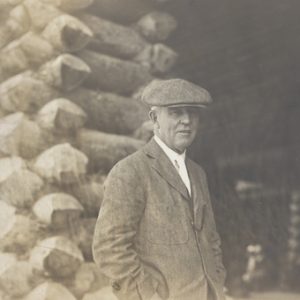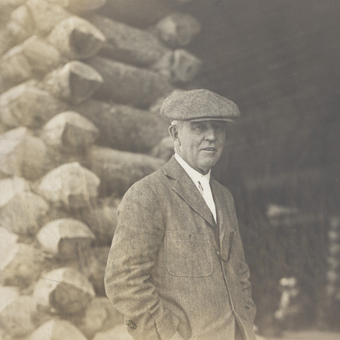Archive: John Barton Payne Personal Papers (SC-31)
-
Biographical Note

On January 16, 1936, the Virginia Museum of Fine Arts opened its doors for the first time. The occasion marked the culmination of more than sixteen years of effort that began in December 1919 with a gift of 51 artworks from Judge John Barton Payne. In spite of the Great Depression, Virginia Governor John Garland Pollard secured the support to meet Payne’s $100,000 challenge grant, and the two men established the first state-run art museum in the United States.
Payne was born in Pruntytown, Virginia, in 1855, where his father, Dr. Amos Payne, had taken his family to establish a medical practice. In 1860, the family returned to the Payne homestead – a farm in Fauquier County, Virginia – and it was here that Payne spent his formative years. Payne taught himself law by reading each volume, one by one, of Blackstone’s Commentaries and began his career as a lawyer in 1876, at age 21, when he was admitted to the Bar. In 1883, having completed his mayoral tenure in Kingwood, West Virginia, he moved to Chicago and attained considerable influence as a lawyer, judge, and philanthropist. He also started collecting art. Payne was engaged with the preeminent Art Institute of Chicago on a number of different levels, and it likely framed his idea of what an art museum should be – an educational and collecting institution for the benefit of the public.
By 1914, with the outbreak of World War I, Payne was appointed to the U.S. Treasury Board of Appeals, serving as general counsel for both the Shipping Board Emergency Fleet Corporation and the United States Railroad Administration. His principal role was as an arbitrator – a peace-keeper – during Wilson’s and subsequent administrations. When World War I ended in 1918, Payne spent the next year helping to negotiate the nuances and politics of peace as the recently appointed Secretary of the Interior. He resigned his position in 1921 so that he could serve as chairman of the American Red Cross. Payne served at the helm of the Red Cross under four administrations, and until the end of his life.
In December of 1919, following the death of his second wife, Jennie Byrd Bryan Payne – who was an artist in her own right – and in honor of his mother, Elizabeth Barton Smith, Payne wrote to Virginia Governor Westmoreland Davis offering his collection of paintings to “his mother,” the Commonwealth of Virginia. The offer was passed by the Virginia legislature on February 20, 1920. To realize his vision, in 1932, Payne offered the Commonwealth a matching grant of $100,000 to construct an art museum. Incredibly, despite the Depression, Governor Pollard was able to match the grant. Construction took place between 1934 and 1936, and Payne and Pollard served consecutively as the institution’s first and second presidents. But it was Payne’s vision that established the museum’s mission and set the course for the next century: a public-private partnership—the first state-run art museum in the United States; a collection based entirely of private philanthropy; and a community of people from every walk of life.
Payne died in 1935, a year before the museum opened from pneumonia contracted following an appendicitis attack and he was buried at Oak Hill Cemetery in Washington, D.C.
Text by Dr. Susan J. Rawles, Associate Curator of American Painting and Decorative Art

-
Scope & Content Note
The collection’s inclusive dates are 1881-1938, with the bulk of the material dating from 1904-1932. The digital collection is comprised of correspondence, lyrics, newspaper clippings, photographs, and travel documents.
-
Provenance
The collection was transferred from the Collections Division in 2018.
